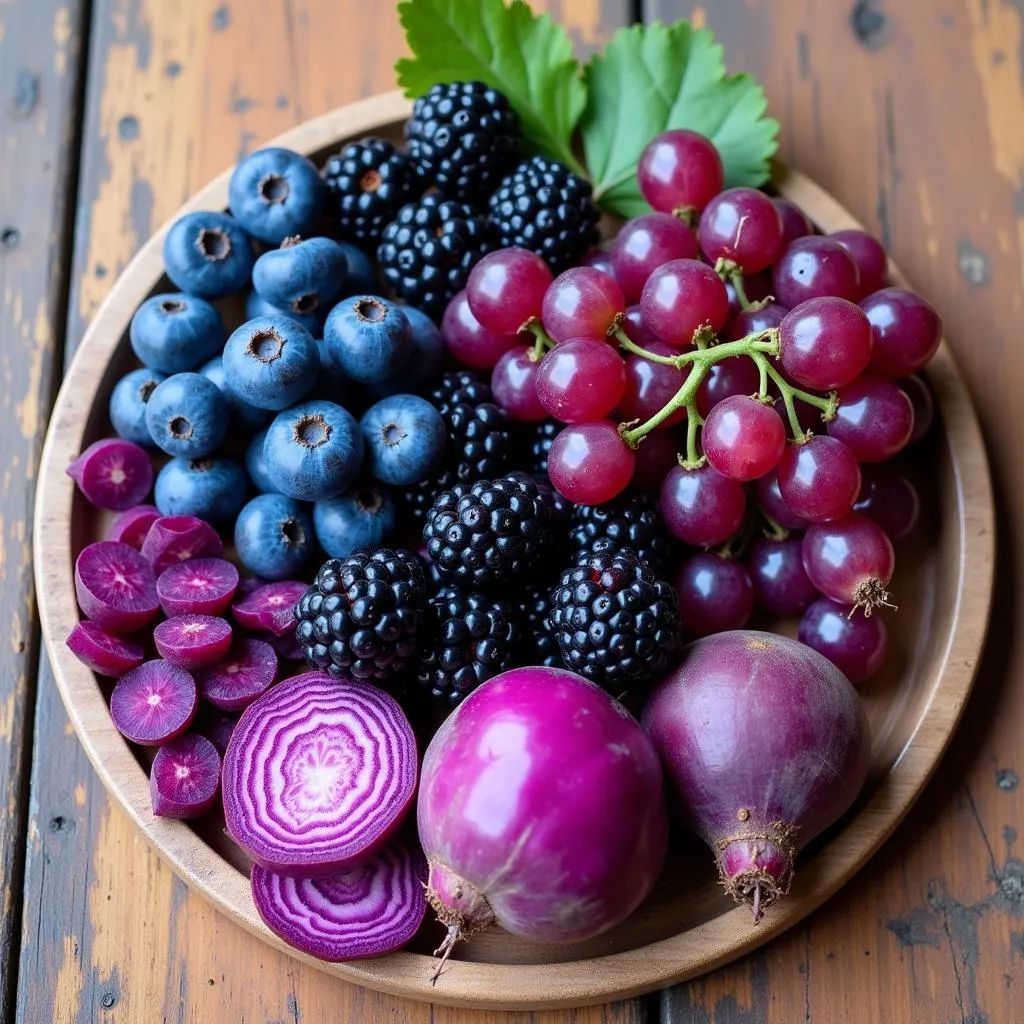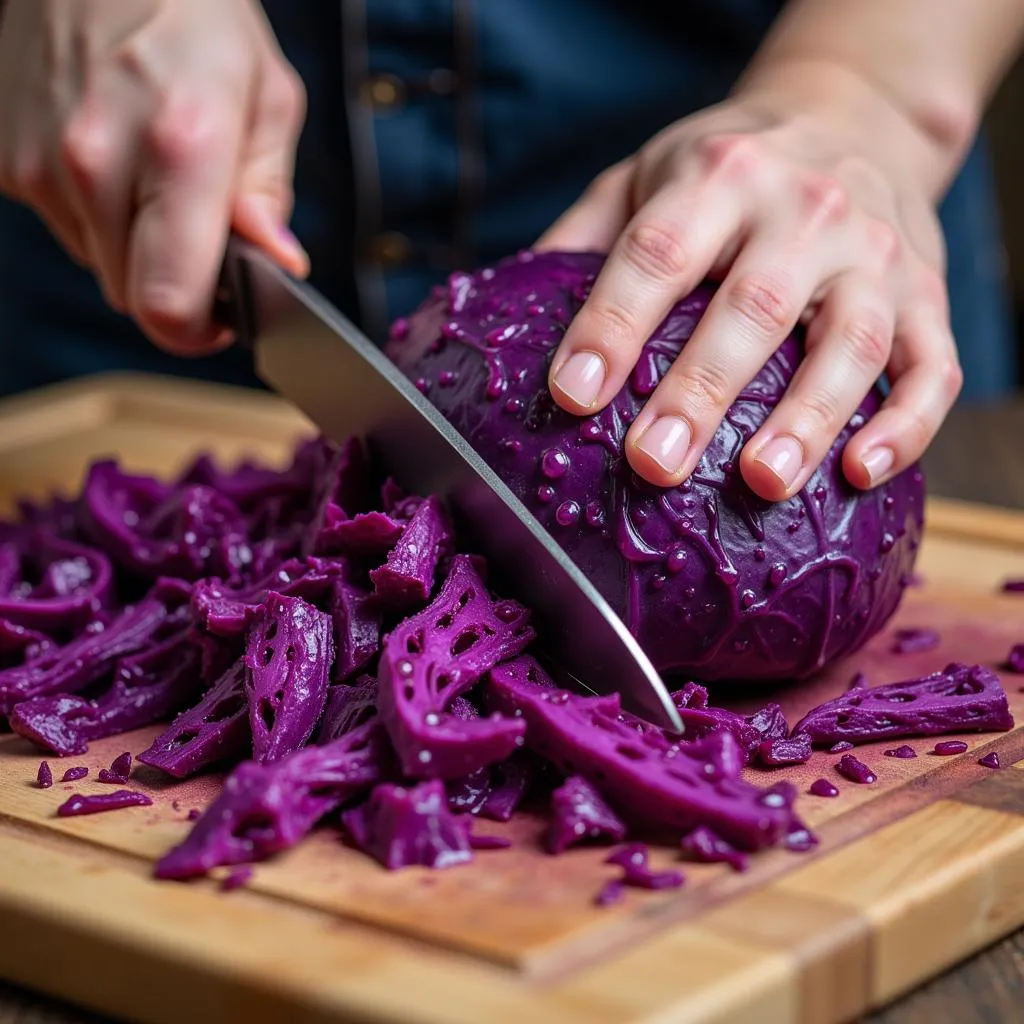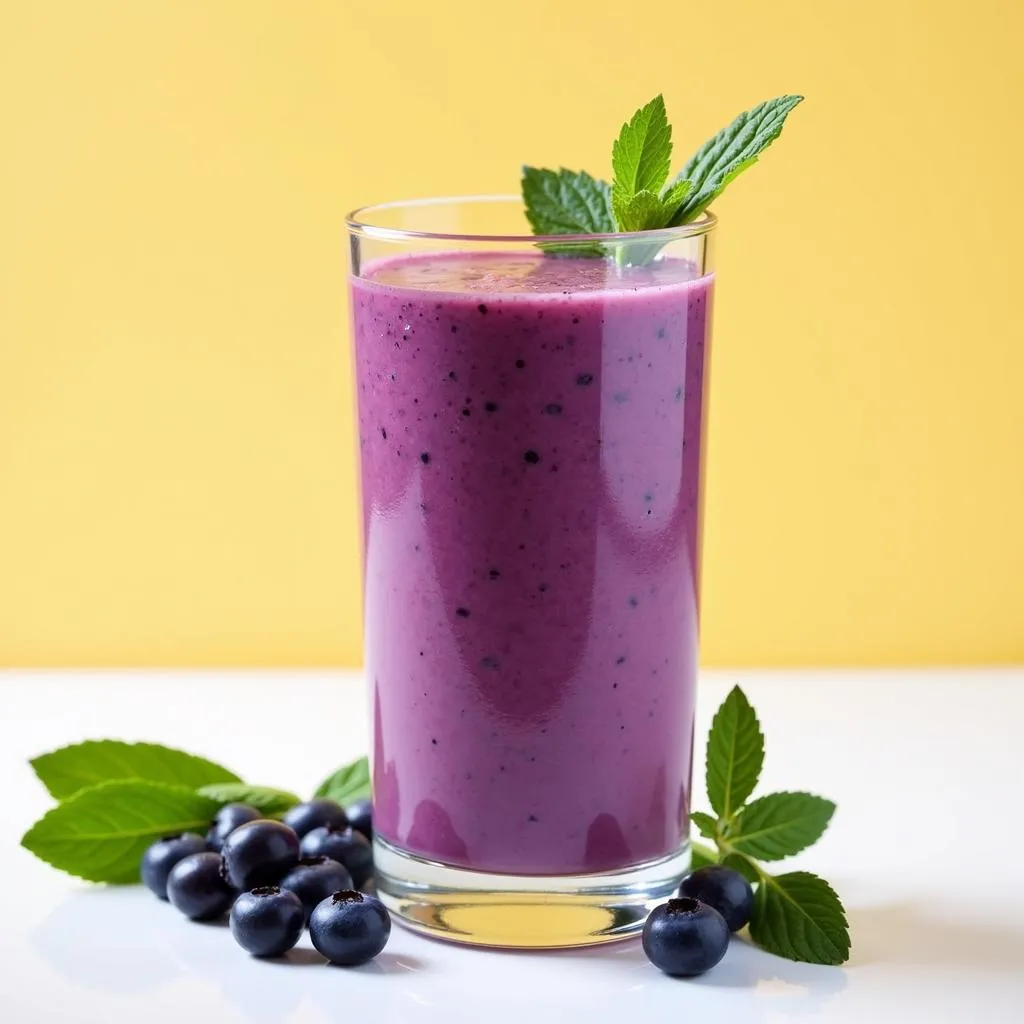Purple food dye, a vibrant and versatile ingredient, has been captivating culinary enthusiasts for centuries. While artificial dyes dominate supermarket shelves, there’s a growing movement towards natural alternatives, driven by health consciousness and a desire for pure, wholesome ingredients. But what exactly is Natural Purple Food Dye, and how can you harness its vibrant hues in your kitchen?
 Assortment of purple foods for natural dye
Assortment of purple foods for natural dye
Unmasking the Mystery: What is Natural Purple Food Dye?
Natural purple food dye is derived from the pigments found naturally in fruits, vegetables, and even some flowers. Unlike their synthetic counterparts, these natural dyes boast a rich history, dating back to ancient civilizations who ingeniously extracted color from their surroundings to enhance their food.
The Allure of Natural: Why Choose Purple Food Dye from Nature’s Palette?
Choosing natural purple food dye isn’t just about embracing a trend; it’s about making a conscious decision for your well-being and the planet’s health. Here’s why:
- Health Benefits: Natural purple food dyes are often rich in antioxidants and other beneficial compounds.
- Environmental Friendliness: Extracting natural dyes is gentler on the environment compared to the production of synthetic alternatives.
- Unique Hues: Natural dyes offer a spectrum of purple shades, from soft lavenders to deep, rich violets, adding a touch of artistry to your culinary creations.
- Allergy Considerations: Some individuals are sensitive to artificial dyes, making natural options a welcome alternative.
Nature’s Bounty: Unveiling the Stars of Purple Food Dye
 Chopping purple cabbage for dye
Chopping purple cabbage for dye
Nature offers a treasure trove of ingredients that can transform your kitchen into a color laboratory. Some of the most popular sources of natural purple food dye include:
- Red Cabbage: This humble vegetable is a powerhouse of color, producing shades ranging from deep blue to vibrant violet depending on the pH level.
- Blueberries: These tiny berries pack a punch of color and flavor, making them a popular choice for dyeing frostings, yogurt, and smoothies.
- Purple Sweet Potatoes: These vibrant tubers impart a beautiful lavender hue to dishes and are a good source of antioxidants.
- Purple Carrots: Don’t let their name fool you; these carrots can produce a stunning range of purples, from delicate lilac to deep magenta.
- Ube: This purple yam, a staple in Filipino cuisine, lends a vibrant purple hue and a slightly nutty flavor to desserts and beverages.
“When working with natural dyes,” notes Chef Emily Carter, renowned pastry chef and advocate for sustainable food practices, “it’s essential to remember that heat and pH levels can impact the final color. Experimentation is key to achieving the desired shade.”
A World of Purple Possibilities: Applications of Natural Purple Food Dye
 Glass of vibrant purple smoothie
Glass of vibrant purple smoothie
The culinary world is your canvas when it comes to natural purple food dye. Here are just a few ways to infuse your dishes with the beauty of natural color:
- Vibrant Frostings and Icings: Elevate cakes, cupcakes, and cookies with naturally dyed frostings that are as appealing to the eye as they are to the palate.
- Colorful Doughs: Impress your guests with homemade pasta, dumplings, or bread dough infused with the subtle hues of natural purple dye.
- Eye-Catching Beverages: Transform ordinary drinks into extraordinary creations with naturally colored smoothies, lemonades, and cocktails.
- Creative Confections: From candies to chocolates, natural purple dye adds a touch of whimsy and visual appeal to your sweet treats.
Tips and Tricks for Mastering Natural Purple Food Dye
- Start Small: Begin with a small batch to get a feel for the dyeing process and adjust the amount of dye as needed.
- Strain for Smoothness: After extracting the dye, strain it through a fine-mesh sieve or cheesecloth to remove any particles and ensure a smooth, even color.
- pH Power: The acidity or alkalinity of your recipe can influence the final shade. For example, adding a bit of lemon juice to red cabbage dye can shift it towards a vibrant pink.
- Storage Savvy: Store any leftover natural dye in an airtight container in the refrigerator for up to a week.
Conclusion: Embrace the Magic of Natural Purple Food Dye
Natural purple food dye offers a world of possibilities for infusing your culinary creations with vibrant, natural color. By embracing these gifts from nature, you’re not only enhancing the visual appeal of your dishes but also making a conscious choice for a healthier and more sustainable approach to cooking and baking. So go ahead, explore the world of natural food dyes, and let your creativity blossom!
FAQs about Natural Purple Food Dye
1. Where can I buy natural purple food dye?
While some specialty stores carry natural food dyes, you can easily make your own at home using fruits and vegetables like red cabbage, blueberries, and purple sweet potatoes.
2. How long does natural purple food dye last?
When stored properly in an airtight container in the refrigerator, natural purple food dye can last for up to a week.
3. Can I use frozen fruits and vegetables to make natural dye?
Yes, frozen fruits and vegetables can be used to make natural dye. Just thaw them completely and pat them dry before using.
4. Will natural purple food dye stain my hands or utensils?
Some natural dyes, like those from berries, can stain. It’s best to wear gloves when handling concentrated dyes and to wash your hands and utensils thoroughly after use.
5. Can I use natural purple food dye to color my hair?
While some natural ingredients are used in hair dyes, it’s best to use products specifically designed for hair coloring. Using food dye on your hair may not produce the desired results and could potentially be damaging.
Do you have more questions about natural food coloring or want to explore other vibrant hues? Check out our articles on food coloring lavender and other natural food coloring options!
Need help with a specific recipe or have a question about using natural purple food dye? Don’t hesitate to reach out! Contact our 24/7 customer service team at 02437655121, email us at [email protected], or visit us at 3PGH+8R9, ĐT70A, thôn Trung, Bắc Từ Liêm, Hà Nội, Việt Nam. We’re always here to help you add a touch of natural magic to your kitchen.